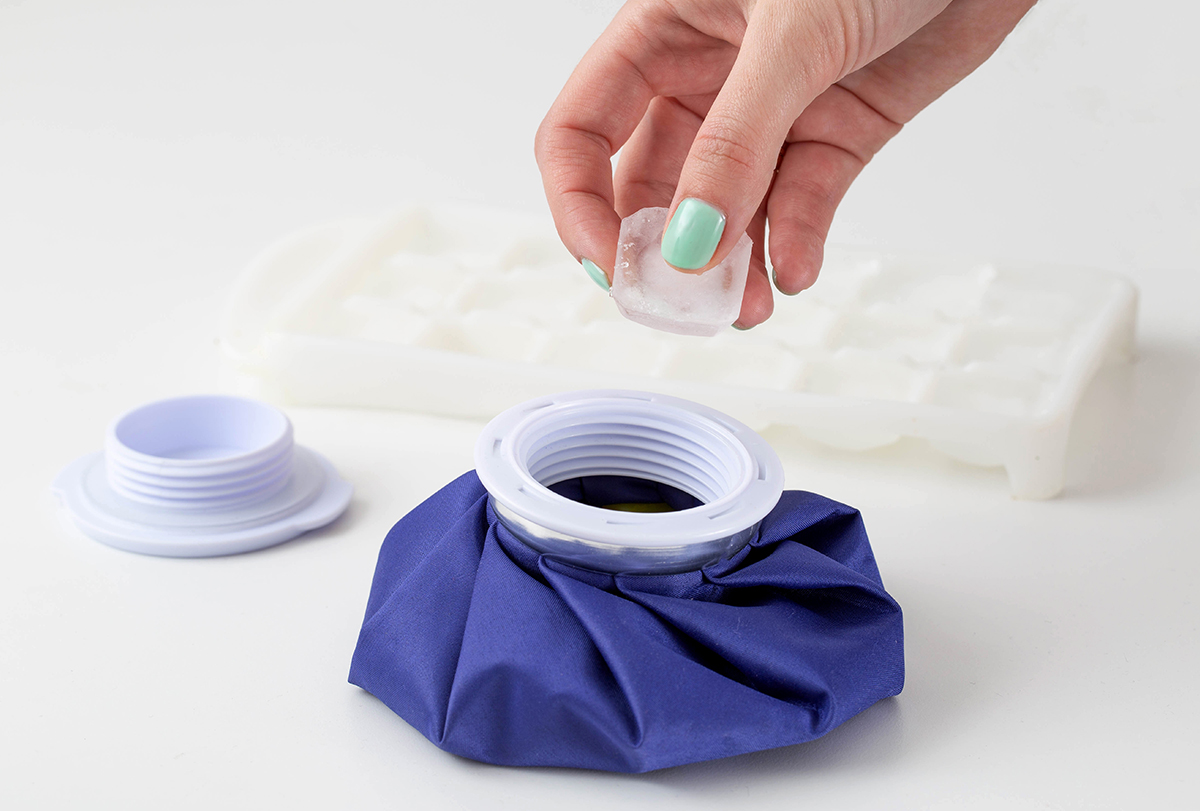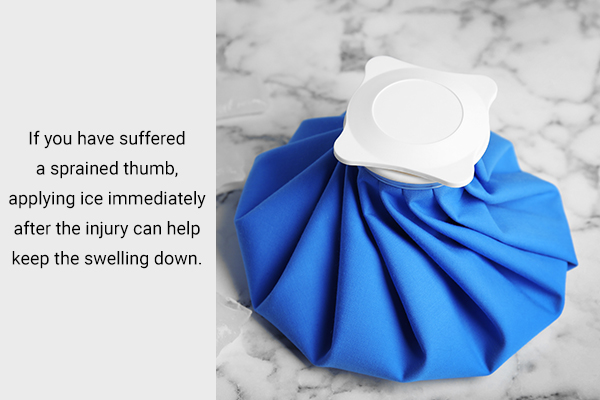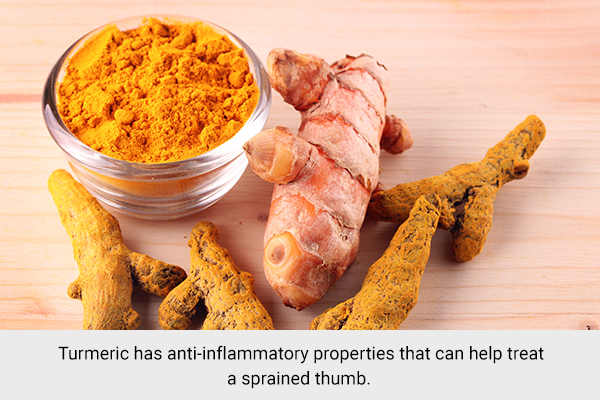In this article:
Doing even the smallest of exercises or activities such as holding something, using your phone, typing, or just cooking is almost impossible without a thumb.

So, if you sprain your thumb, it will be very hard to do various day-to-day functions. This is why treating a sprained thumb and making sure it heals very quickly are important.
It’s not only the inability to perform various functions but also the pain and discomfort that comes with a sprained thumb that can be very hard to deal with. (1)
A lot of reasons can lead to a sprained thumb. Common ones include:
- Strenuous activity
- Repetitive use of the thumb
- Arthritis
- Sports injury
- Sudden pressure on the thumb
- Pressing the thumb against a hard surface
Ways You Can Treat Sprained Thumb at Home
Here are some ways you can look after a sprained thumb at home.
1. Rest your thumb for at least 48 hours
To make sure that your sprained thumb heals quickly, you have to give it time and make sure that you rest for at least 48 hours. Any kind of soft tissue damage requires proper rest in order to heal completely.
If you do not rest your thumb and continue doing daily activities using it, you will end up putting extra strain on the injury and may cause further pain and increased inflammation. Avoid any kind of painful movement or jerk that may aggravate the issue. (2)(3)
2. Apply an ice pack for 20 minutes

You can reduce swelling and other symptoms of a sprained thumb such as pain and redness by using a simple and effective method – applying an ice pack.
Just wrap some ice cubes in a clean towel and apply it to the affected area. The cold temperature will lower the metabolic rate of the surrounding soft tissue, which in turn will reduce enzymatic activity, preventing further tissue damage.
You can also purchase an ice pack and use it in a similar way. Do this several times a day until you feel better.
Studies have shown that cold compression therapy is effective in improving clinical outcomes after knee replacement surgery and in managing musculoskeletal injuries. Therefore, if you have a sprained thumb, applying ice immediately after the injury can help keep the swelling down.
It is recommended to use cold packs for 20 minutes at a time, several times a day. However, never apply ice directly to the skin, as it can cause skin damage. (2)(4)
3. Keep your thumb elevated
Circulation decreases in the area with a sprain. Thus, it is important to improve your blood circulation by elevating the affected area.
Elevation causes increased blood circulation to your sprained thumb, allowing the elimination of waste products from there. It helps manage symptoms such as swelling, inflammation, and pain by speeding up the healing process.
You can elevate your thumb by putting a few pillows under it. (3) As often as possible, rest with your hand raised up higher than your heart.
4. Wrap a bandage around the affected thumb
Swelling, which is commonly observed with a sprained thumb, is due to fluid buildup in the affected area. To reduce the swelling and pain that comes with a sprained thumb, wrap an elastic bandage around your thumb.
It is important to note that you should not wrap the bandage too tightly to prevent the disruption of blood circulation to that area. (3)
Note: Experts share a quick hack – tape a lollipop stick or something similar to your thumb to keep it in place until you can get a splint. Additionally, wearing a splint at night can provide support to your thumb and alleviate pain.
5. Exploit the benefits of turmeric

Turmeric contains a chemical compound called curcumin, which has anti-inflammatory properties that can be put to use to treat a sprained thumb.
All you have to do is make a turmeric paste by mixing turmeric powder with olive oil and applying it to the affected area for a few hours.
You can also get the beneficial effects of turmeric by drinking turmeric milk twice daily. (5)
6. Massage the thumb with cayenne pepper
Cayenne pepper contains a chemical compound called capsaicin. This compound has anti-inflammatory benefits, which can be helpful in treating a sprained thumb.
Mix cayenne powder with olive oil, and massage the affected area with this mixture for about a minute. Wash it off after a while. Doing this twice daily is helpful.
If you see any kind of irritation on your skin, discontinue using this remedy. (6)
7. Apply arnica oil to your finger
Arnica is a well-known herb that is an anti-inflammatory agent and thus is useful in reducing pain, swelling, or the body’s inflammatory response that comes with a sprained thumb. It is available as an essential oil, which you can mix with a carrier oil and then massage on the affected area.
After applying the arnica oil, you can wrap the affected finger with a bandage and then remove it after a few hours. Make sure that you do a patch test before using arnica oil on your thumb. (7)
8. Exercise the sprained thumb

A sprained thumb can take more than a few days to heal. The affected thumb can become stiff, and therefore, you need some exercise to get back its full functionality.
One of the most common exercises is squeezing a soft rubber ball for a few seconds. Do this every few hours. This kind of ball is easily available at sports shops or pharmacies.
Other than this, you can also move your thumbs sideways and then hold the position for a few seconds. This exercise is also good for restoring thumb function. (8)
9. Massage your thumb for 5–10 minutes
Massage improves blood flow to the affected area, which further helps with the healing process. You can massage your sprained thumb using olive oil for 5–10 minutes. Do this every few hours to get relief. (9)
What Not to Do?
If you have a sprained thumb, avoid doing the following to prevent further injury or slow down the healing process:
- Avoid lifting heavy objects or gripping anything too tightly with your hand.
- Refrain from using ibuprofen in the first 48 hours after the injury as it may hinder the healing process.
When to See a Doctor
When you have a sprained thumb, seek the help of an orthopedic specialist if you experience any of the following symptoms:
- The pain is getting worse or keeps coming back despite the use of home remedies or over-the-counter pain medication.
- The pain is so severe that you are unable to perform your day-to-day activities.
- You have a loss of sensation in your hand, such as numbness or tingling.
- You experience faintness or dizziness.
While these symptoms are common for other types of sprains as well, it is always a good idea to consult a medical professional if you are unsure or concerned about your condition.
An orthopedic specialist can provide a proper diagnosis and suggest treatment options, especially if your injury is more serious than initially thought.
Most-Asked Questions About a Sprained Thumb
What are some common symptoms of a sprained thumb?

Symptoms that a lot of people experience when they have a sprained thumb include;
- Pain
- Stiffness
- Bruises
- Edema
- Loss of functionality
Is a sprained thumb a serious health issue?
A sprained thumb is not a serious medical issue. It will resolve within a few days, and if you do some remedies at home, you may even accelerate its healing.
However, if the ligaments in your thumb are torn or the bones are broken, serious problems can result, and the sprained thumb should be treated by a medical professional timely to avoid any further injury.
In such a case, it is best to go to a doctor and receive the needed interventions.
How long does a sprained thumb take to heal?
The healing time for a sprained thumb varies depending on the severity of the injury. In general, a mild sprain may take a few days to a week to heal, while a more severe sprain can take several weeks to months to fully recover.
How do I know how bad my thumb sprain is?

The severity of a thumb sprain can be determined based on the level of pain, swelling, and stiffness experienced. Imaging tests, such as an X-ray or MRI, may also be used to diagnose the extent of the injury.
If you are unsure about the severity of your thumb sprain, it is best to consult a medical professional for an accurate diagnosis.
Is it okay to move a sprained thumb?
It is generally okay to move a sprained thumb, but it is important to avoid excessive movement or putting too much pressure on the injured area.
Gentle movement and exercise may actually help improve range of motion and reduce stiffness. However, if movement causes significant pain or discomfort, it is best to rest and avoid further activity until the injury has healed. (8)
What OTC medications are prescribed by doctors for a sprained thumb?
OTC pain relievers, such as acetaminophen (Tylenol) or ibuprofen (Advil), can help alleviate pain and reduce inflammation, according to health professionals.
Final Word
A sprained thumb can be a painful and debilitating injury and can make even the simplest of daily activities challenging. Fortunately, several home remedies can help manage the pain and speed up the healing process.
Rest, ice, elevation, and compression are the mainstays of treatment. Additionally, natural remedies such as turmeric, cayenne pepper, and arnica oil can be effective in reducing pain and inflammation.
Some exercises can help restore the full functionality of the thumb once it has healed. For severe pain or the inability to move the thumb, it is important to consult a doctor for further evaluation and treatment.
- Was this article helpful?
- YES, THANKS!NOT REALLY


